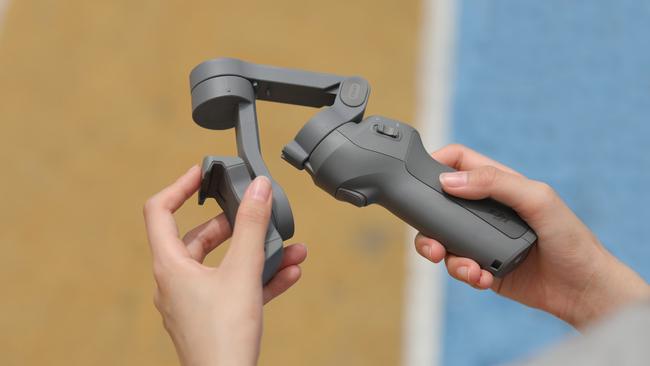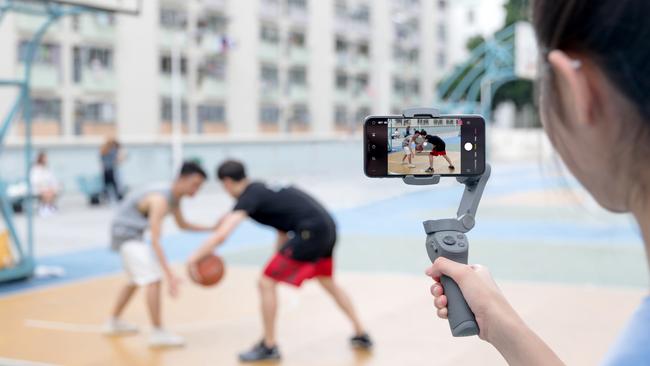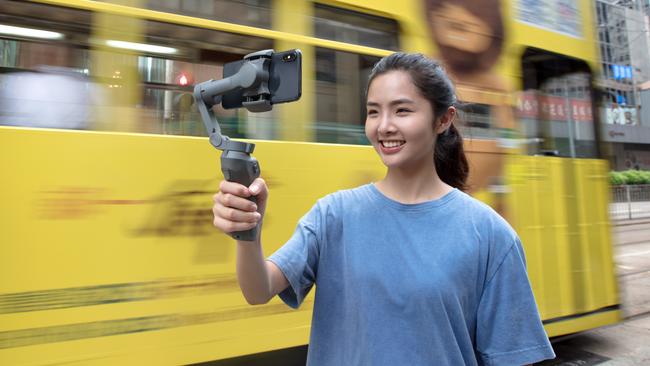Swap selfie stick for DJI gimbal
DJI’s latest mobile gimbal not only makes video motion as smooth as silk, it also folds up for easy transporting out and about.

DJI’s latest mobile gimbal not only makes video motion as smooth as silk; it also folds up for easy transporting out and about.
You may ask: why bother with a mechanical device to get rid of the shakes in videos? Many modern phone cameras offer optical or digital image stabilisation. It’s true you can get rid of video shake if you hold a smartphone carefully, with one hand supporting the other. But this usually works only if you are stationary. It becomes extremely hard to shoot smooth video when you are walking or running with the camera.
There is therefore a market for smooth cinematic sequences involving gentle pans, tilts and other manoeuvres hard to execute with handheld phones. Try taking a selfie of you running and keeping the surrounds steady.
These shots are possible when your phone is mounted on a handheld gimbal that absorbs the bumps and has a built-in motor for smooth pans and tilts.

DJI, the world’s dominant maker of consumer drones, saw the potential of taking the technology in gimbals attached to its drones and repackaging it as a handheld entity.
The Chinese company is going from strength to strength, having been valued last year at $US15bn ($23bn). That’s a big return from the $3400 that DJI founder Frank Wang snagged for research into developing a drone at Hong Kong University of Science and Technology in 2005.
DJI’s latest gimbal, the Osmo Mobile 3, fits in a small carrying case but unfolds to be about the size of the first two versions of its mobile phone gimbals. You mount the phone in the gimbal’s cradle and carry it around like a selfie stick. But this is a selfie stick on steroids. And you can shoot using both the front and back camera. The motor kicks in to offer image stabilisation, but that’s just the start. There’s a thumb-operated joystick that moves left, right, up and down for smooth pans and tilts. You can alter the speeds of these movements in the settings.

In follow mode, you lock on to a person and follow their movement in front of a smooth flowing background. If you place the gimbal on its stand, switch to selfie mode and walk, the gimbal will follow you and shoot a dynamic version of a selfie video. You can shoot in 720p, 1080p and 4K.
You also can take time-lapse, slow-mo and hyperlapse video. With time lapse you can appear to be walking normally down a road with people passing you at incredible speed. Hyperlapse smooths out the surrounding as you move quickly. The gimbal also takes panorama shots.
The control buttons are similar to version one with an M (mode/power) button, a button for snapping images and video, joystick, a zoom button, and a squeeze trigger for locking on to objects while taking video.
The mode button has multiple uses. You press it once to swap between photo and video mode, twice to rotate the phone from portrait to landscape or back, and three times to lock it in standby mode. You can swap between the back and front facing cameras by squeezing the trigger three times.

The gimbal connects to a phone by Bluetooth and works in conjunction with the DJI Mimo app. There is a story mode, which creates a short video by cobbling together three or four video segments of three seconds each.
There’s a sports mode for shooting fast-moving action, and gesture support. It would take a selfie when I raised my palm.
The Osmo Mobile 3 charges in a little more than two hours via a standard USB type-C port; battery life is about 15 hours. You can charge your cradled phone via the gimbal’s USB Type-A port.
There are a couple of issues. Version three of this gimbal requires you to “balance” the phone when you insert it into the cradle. This is a bit fiddly until you get used to it. The software doesn’t swap between multiple lenses on phones. You can pan left and right to wide angles, but tilting up and down is a tad more limited.
In the end, this is a great accessory. Throw away your selfie stick and get an Osmo Mobile 3.
You also save. I bought my non-foldable version one Osmo Mobile for $229. This more powerful version is $159, or $189 with a tripod and carrying case.



